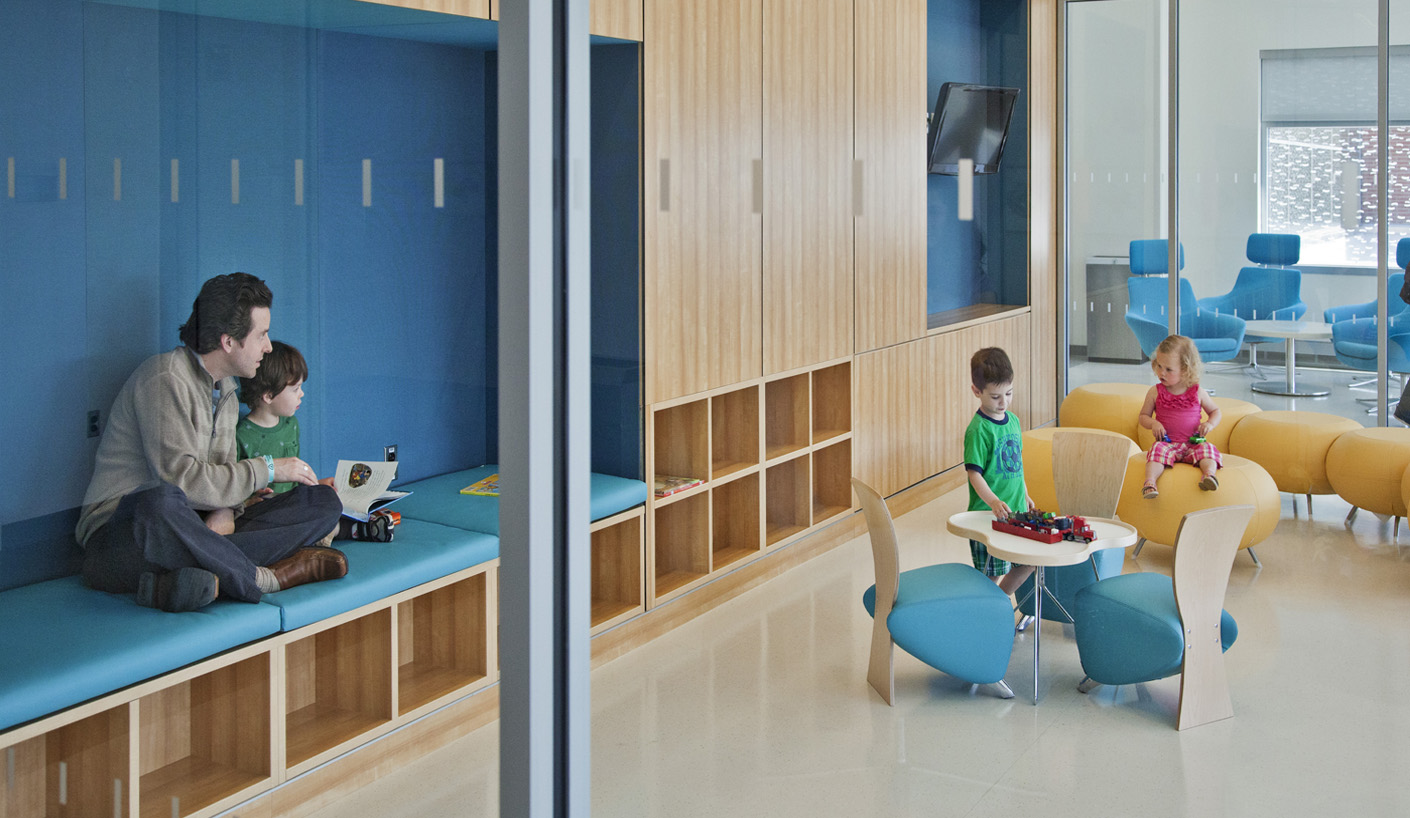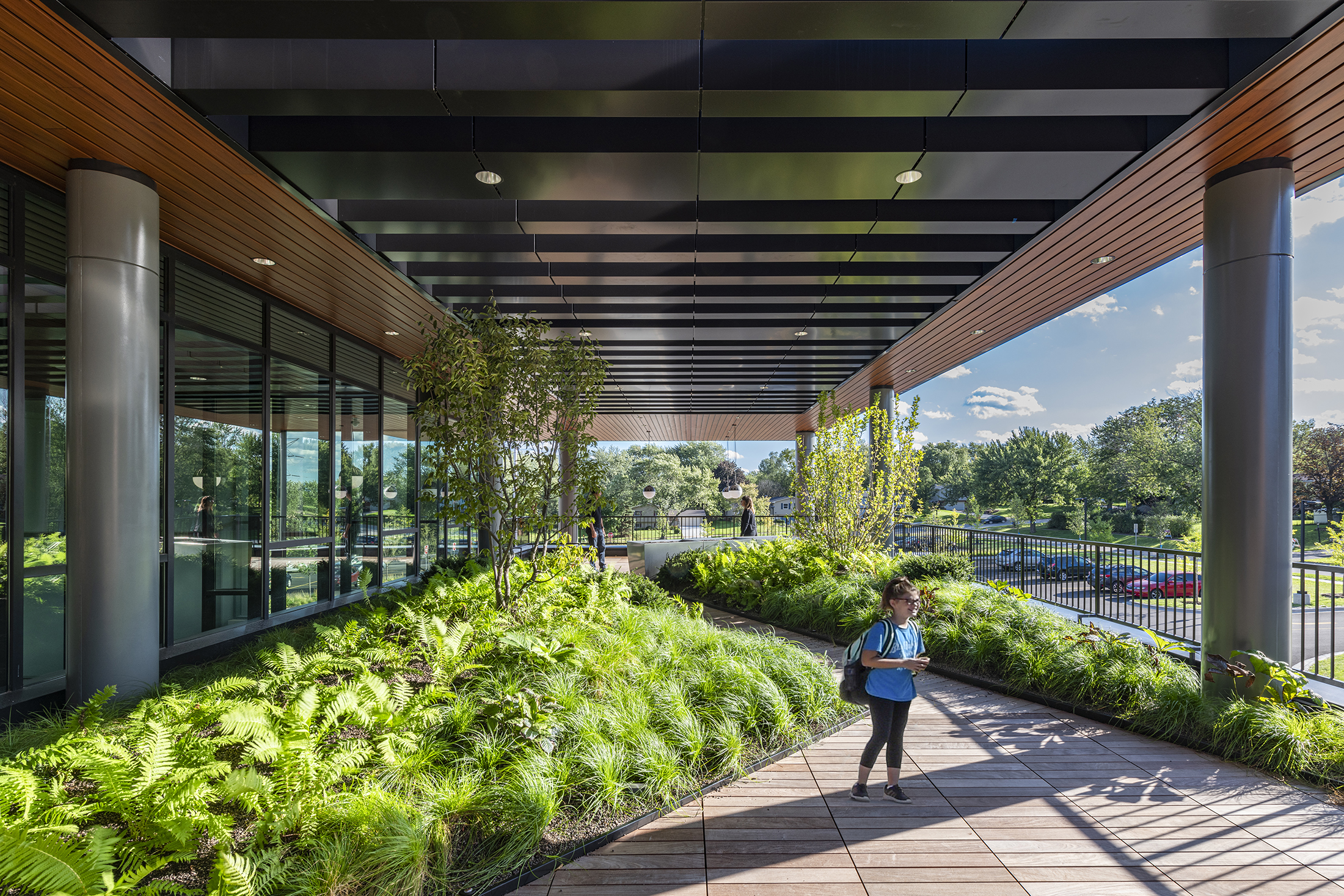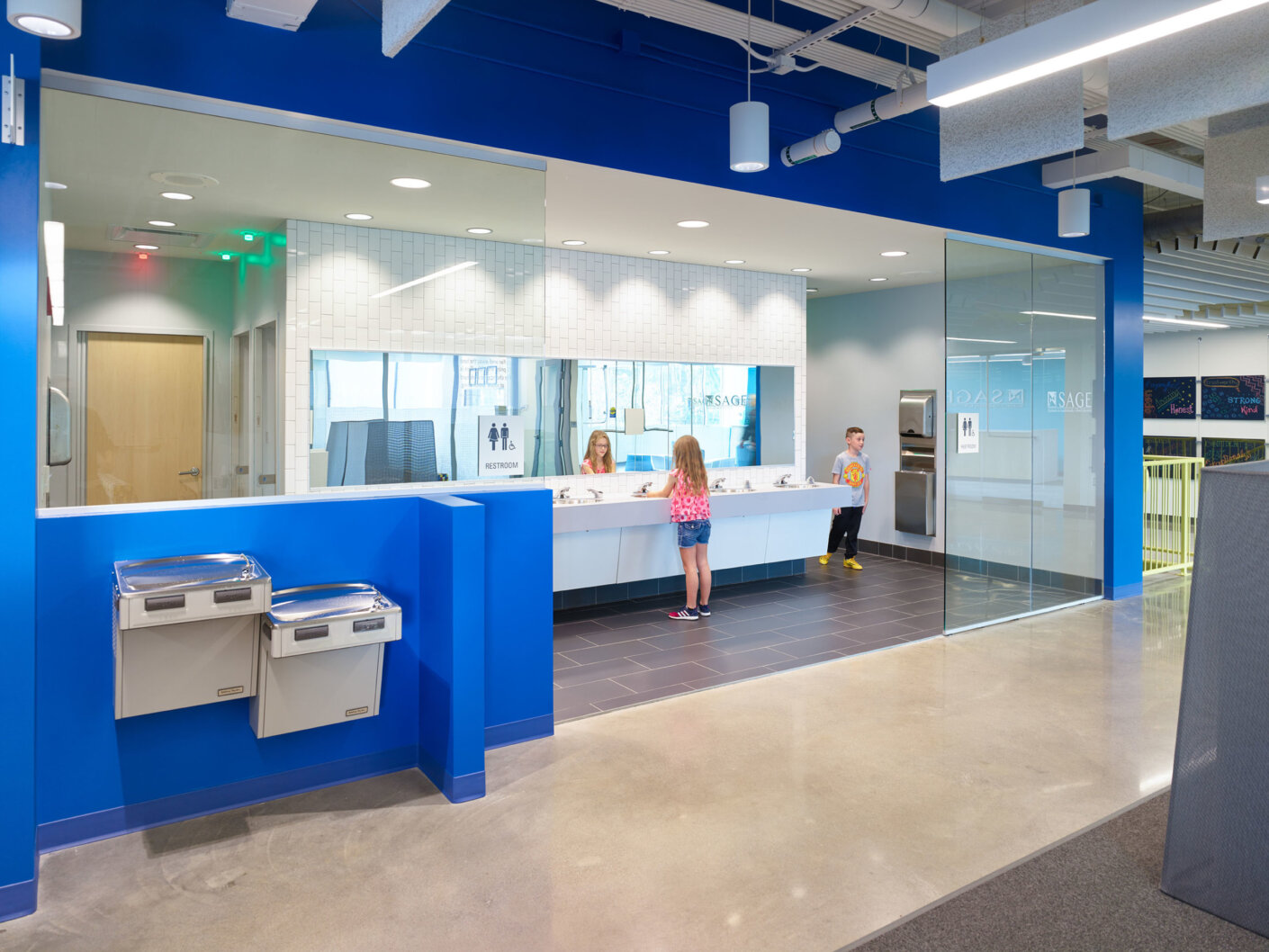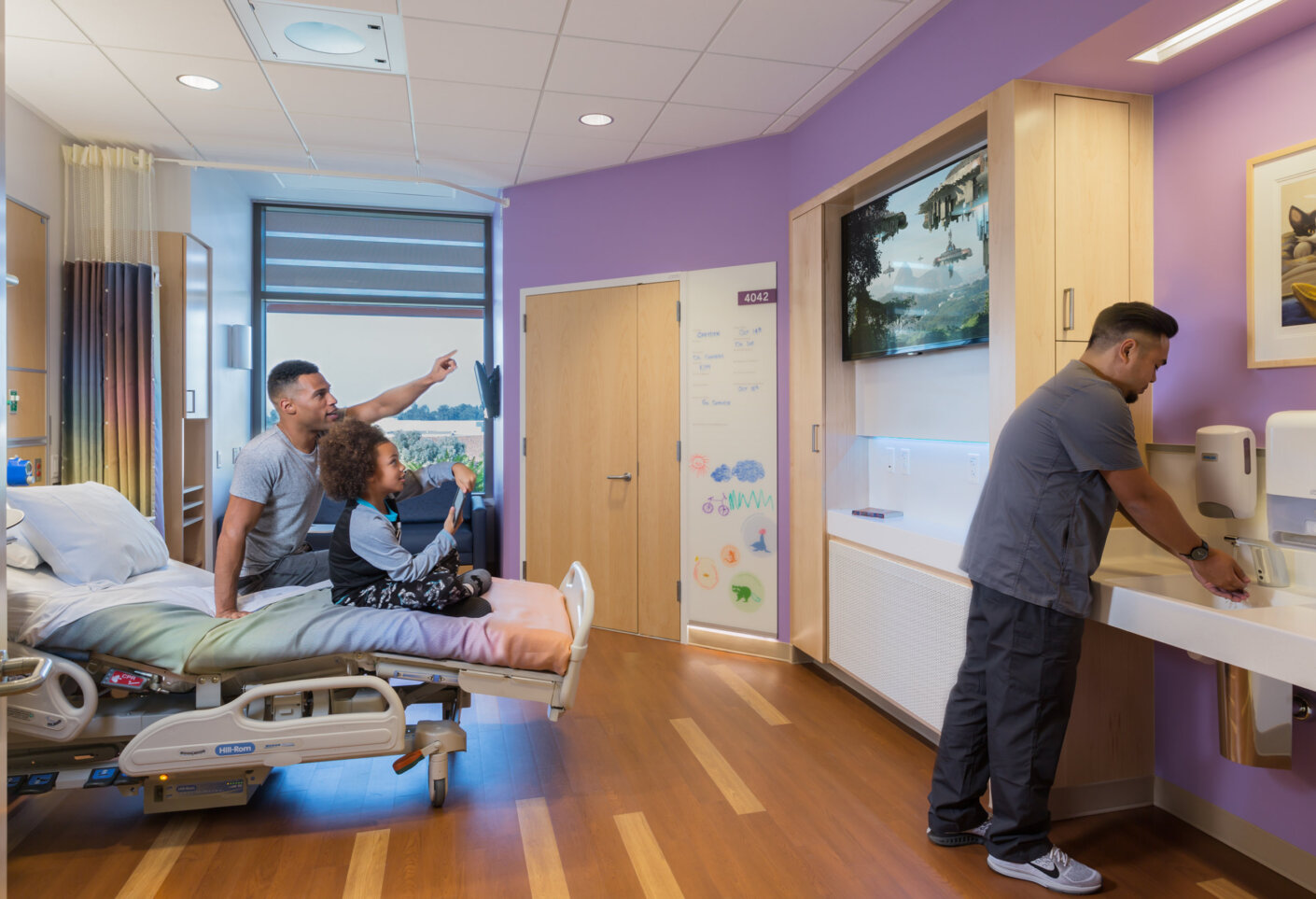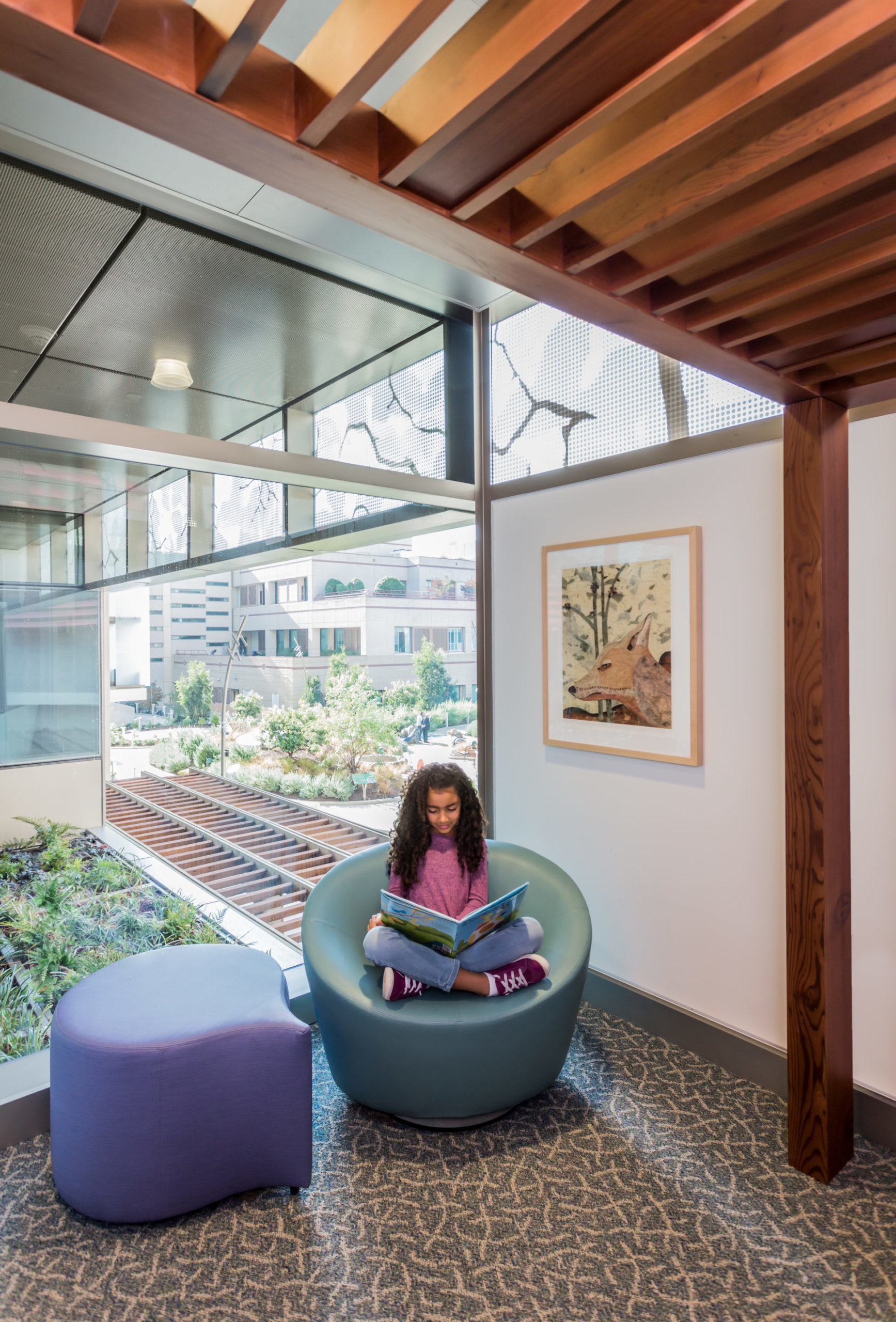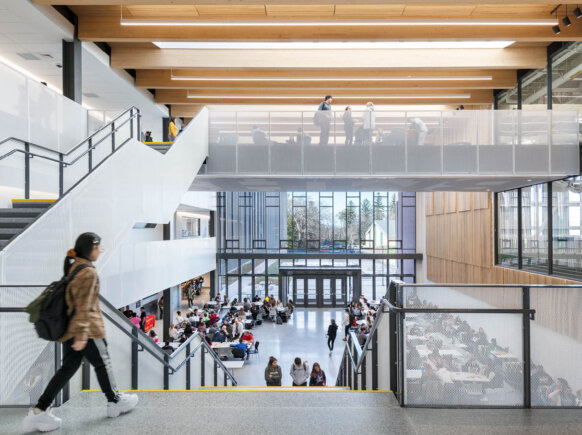Learning communities across the world are responding.
With urgency and grit, they nimbly deliver a sense of stability and community to isolated families. Some are using otherwise–idle buses to deliver food to the many students who rely on school meals for nourishment, others are hosting spirit weeks via social media to help children feel connected, and some districts are using their resources to deliver hand sanitizer where it is urgently needed.
These responses shed a bright light on the vital importance of schools as both institutions for learning and places for community building.
When this health crisis passes and some of the trauma has settled, educational institutions will look for insights to help them prepare for future pandemics or any other challenge the world of learning may face. To help, we collaborated with our healthcare experts to understand the tools they employ when designing spaces for healing that mitigate the spread of infection and boost overall well-being. We understand this is a complicated and nuanced issue, but hope that by sharing these best practices, we can help schools build resilience ahead of future outbreaks and other stressors.
Below are techniques architects can adapt from hospital design to help reduce the rate of infection, improve well-being, and help school communities stay healthy.
